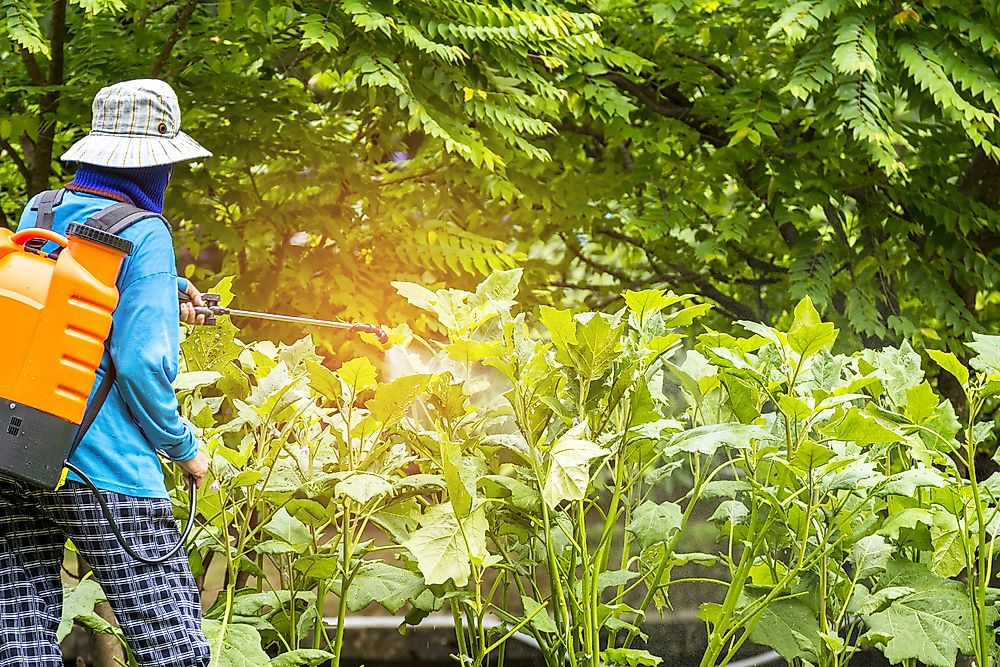What Is A Persistent Organic Pollutant?

Persistent organic pollutants (POPs) are toxic organic combinations that are non-biodegradable. They are carbon based chemicals that undergo chemical and biological processes. POPs also remain in the environment for a long period of time because they are resilient to degradation. They are and were initially used in place of solvents, chemicals, pesticides, and pharmaceuticals. POPs are believed to occur naturally although man can also make them.
Twelve Initial POPs
Deldrin is one of the initial POPs. It is a type of pesticide that is used to control pests and insects inhabiting agricultural soil such as termites and textile pests. Deldrin is said to be highly poisonous to aquatic animals, especially to fish and frogs. Aldrin is another POP that serves as an insecticide to get rid of grasshoppers, termites and other insects. It is also dreadful to humans, fish, and birds. However, human beings get exposed indirectly through animal products like milk and meat.
Mirex is another type of POP that serves as an insecticide. Its function is to get rid of termites and ants but it is also deadly to fish and some plants. It is also said to be steady and resilient. Mirex has a half-life of ten years. The fourth POP is Chlordane, which is an insecticide it is used to get rid of termites. Chlordane is toxic to some birds such as the pink shrimp and has a half-life of a year. Endrin is also a POP and insecticide; it is used to get rid of rodents.
Toxaphene is a persistent organic pollutant that serves in controlling pests such as ticks and mites. The insecticide is also used on fruits, grains, and vegetables. It is lethal to fish and has a half-life of twelve years. Another POP is Heptachlor serves as a pesticide and it is used to control insects, malaria-carrying mosquitoes, and termites. Dioxin is also a POP that is formed involuntarily as a by-product of heating processes. .
Polychlorinated biphenyls works as a stabilizer in paint and plastic. It is also existent in capacitors and transformers. Although Dichlorodiphenyltrichloroethane is not well known, it worked as an insecticide to prevent malaria and typhus during World War II. In addition, Hexachlorobenzene is a persistent organic pollutant that whose function was to protect seed from fungi. Lastly, Polychlorinated dibenzofurans just like Dioxin are by-products of heating processes, such as unfinished burning or when a pesticide is being made.
Effects Of POPs
POPs cause health complications; it is believed that they cause prolonged illness or death. POPs are also believed to cause endocrine interference within the immune system, reproductive system, and central nervous system. Animals and human beings are exposed to POPs through their livelihood, diet or in the process of birth. It is believed that approximately 90% of human beings are exposed to POPs from their diets that contain animal products. These foods lead to bioaccumulation in fat tissues that then cause health hazard.
POPs cause environmental pollution. They gather far away from regions where they were originally released including areas where they were non-existent. This is because POPs cause vaporization of vegetation, water, and soil into the air as they travel. Therefore, they repel breakdown reactions in the atmosphere hence travelling a long distance before re-deposition. This in turn causes contamination of the atmosphere as the POPs remain in the environment for a long period due to their resilience to degradation.











